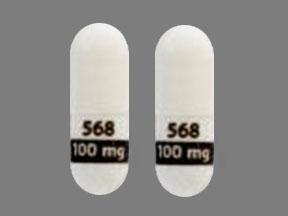Zolinza Disease Interactions
There are 5 disease interactions with Zolinza (vorinostat).
Vorinostat (applies to Zolinza) thromboembolism
Major Potential Hazard, Moderate plausibility. Applicable conditions: Thrombotic/Thromboembolic Disorder
The use of vorinostat may cause pulmonary embolism and deep vein thrombosis. It is recommended to monitor for signs and symptoms of these events, particularly in patients with a prior history of thromboembolic events.
References (1)
- (2006) "Product Information. Zolinza (vorinostat)." Merck & Co., Inc
Vorinostat (applies to Zolinza) diabetes
Moderate Potential Hazard, Moderate plausibility. Applicable conditions: Diabetes Mellitus
The use of vorinostat may cause hyperglycemia. It is recommended to monitor serum glucose every 2 weeks during the first 2 months of therapy and monthly thereafter. Care should be exercised when using this agent in diabetic patients.
References (1)
- (2006) "Product Information. Zolinza (vorinostat)." Merck & Co., Inc
Vorinostat (applies to Zolinza) GI disturbances
Moderate Potential Hazard, Moderate plausibility. Applicable conditions: Vomiting, Diarrhea, Electrolyte Abnormalities, Hypokalemia, Magnesium Imbalance
The use of vorinostat may cause gastrointestinal disturbances. It is recommended to adequately control any preexisting nausea, vomiting, and diarrhea prior to beginning treatment with vorinostat. Fluid and electrolytes should be replaced to prevent dehydration and the use of antiemetic and antidiarrheal medications may be appropriate. Correct hypokalemia and hypomagnesemia prior to administration of vorinostat. Monitor potassium and magnesium more frequently in symptomatic patients.
References (1)
- (2006) "Product Information. Zolinza (vorinostat)." Merck & Co., Inc
Vorinostat (applies to Zolinza) liver impairment
Moderate Potential Hazard, Moderate plausibility. Applicable conditions: Liver Disease
Compared to patients with normal liver function, AUC increases of 50 to 66% were observed in patients with hepatic impairment. It is recommended to reduce the starting dose of vorinostat to 300 mg orally once daily with food in patients with mild to moderate hepatic impairment (bilirubin 1 to 3 × ULN or AST greater than ULN). There is insufficient evidence to recommend a starting dose for patients with severe hepatic impairment (bilirubin greater than 3 × ULN). Precautions should be instituted when using this agent in patients with liver dysfunction.
References (1)
- (2006) "Product Information. Zolinza (vorinostat)." Merck & Co., Inc
Vorinostat (applies to Zolinza) myelosuppression
Moderate Potential Hazard, Moderate plausibility. Applicable conditions: Bone Marrow Depression/Low Blood Counts
The use of vorinostat can cause dose-related thrombocytopenia and anemia. It is recommended to monitor blood counts every 2 weeks during the first 2 months of therapy and monthly thereafter. Adjust dosage or discontinue treatment as clinically appropriate. Care should be exercised when using this agent in patients with bone marrow suppression.
References (1)
- (2006) "Product Information. Zolinza (vorinostat)." Merck & Co., Inc
Switch to consumer interaction data
Zolinza drug interactions
There are 87 drug interactions with Zolinza (vorinostat).
More about Zolinza (vorinostat)
- Zolinza consumer information
- Check interactions
- Compare alternatives
- Pricing & coupons
- Drug images
- Side effects
- Dosage information
- During pregnancy
- FDA approval history
- Drug class: histone deacetylase inhibitors
- En español
Related treatment guides
Drug Interaction Classification
| Highly clinically significant. Avoid combinations; the risk of the interaction outweighs the benefit. | |
| Moderately clinically significant. Usually avoid combinations; use it only under special circumstances. | |
| Minimally clinically significant. Minimize risk; assess risk and consider an alternative drug, take steps to circumvent the interaction risk and/or institute a monitoring plan. | |
| No interaction information available. |
See also:
Further information
Always consult your healthcare provider to ensure the information displayed on this page applies to your personal circumstances.


